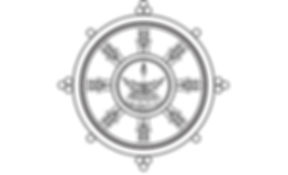
Termo
Tibetano:
ཨ་ཏི་ཤ, ཇོ་བོ་ཨ་ཏི་ཤ, ཇོ་ཝོ་ཨ་ཏི་ཤ
a ti sha, jo bo a ti sha, jo wo a ti sha
Atenção: provisório – em revisão
Sânscrito:
अतीश, अतीश दीपंकर
atiśa, atīśa dīpaṁkara
Português:
Atīśa, Atiśa Dīpaṁkara, Jowo Atīśa
Também conhecido como Dīpaṃkara-śrī-jñāna (982-1054). Atiśa Dīpaṅkaraśrījñāna foi abade da univer- sidade monástica de Vikramaśīla, na Índia. A convite do lama e rei Yeshe Ö, viajou para o Tibete em 1042, onde inspirou o reflorescimento do Budismo após o período de perseguições imposto durante o reinado do rei Langdarma. Atīśa, ou Jowo Je ( jo bo rje), epíteto pelo qual ficou célebre, introduziu no Tibete as técnicas de treino da mente (Lojong) que tinha recebido do seu mestre Suvarṇadvīpa Dharmakīrti — mais conhecido entre os tibeta- nos como Serlingpa. Estas técnicas combinam as duas tradições de ensinamentos da bodhicitta transmitidas por Nāgārjuna e
Asaṅga. Atīśa foi também um mestre tântrico. O seu principal discípulo tibetano e sucessor foi Dromtönpa, fundador da antiga escola Kadampa. Atīśa permaneceu no Tibete durante doze anos e ali faleceu, em Nyethang, no ano de 1054. [BQHT, 2023]
Inglês:
Atīśa, Atīśa Dīpaṁkara, Jowo Atīśa
Also known as Dīpaṁkara or Jowo Atīśa (jo bo a ti sha). This great Indian master and scholar, one of the main teachers at the famous university of Vikramaśīla, was a strict follower of the monastic rule. He received the bodhicitta teachings from many important masters, and in particular from the Lord of Suvarṇadvīpa (Dharmakīrti), under whom he studied in Indonesia. He spent the last ten years of his life in Tibet, teaching and taking part in the translation of Buddhist texts. His disciples founded the Kadampa school. [...]
Also known as Dipamkarashrijnana (982-1054), abbot of the Indian monastic university of Vikramaśīla. Philosophically, he is considered to be Prāsaṅgika Madhyamaka in the school of Candrakīrti, although he also upheld the teachings of the Yogācāra Madhyamaka. He came to Tibet at the invitation of the king Yeshe O to restore the Buddhadharma after its persecution by Langdarma. He introduced there the Mind Training teachings (blo 'byongs), which he received from his teacher Suvarṇadvīpa Dharmakini and which are a synthesis of the bodhichitta traditions of Nāgārjuna and Asaṅga. He was also a master of the tantra teachings. His main disciple and successor was the upāsaka Dromtön ('brom ston), who founded the Kadampa school and built the monastery of Reting (rwa sgreng). Atīśa died at Nyethang in Tibet in 1054· [TPQ, 1998]
The great Indian master and scholar Dipamkara (982–1054), who spent the last ten years of his life in Tibet propagating the teachings on refuge and bodhichitta and contributing to the translation of Buddhist texts. His disciples founded the Kadampa school, which emphasized the teachings on the mind training. [TLWF, 2011]
Also known as Dipamkara or Jowo Atisha (jo bo a ti sha): this great Indian master and scholar, one of the main teachers at the famous university of Vikramashila, was a strict follower of the monastic rule. Although he was an accomplished master of the tantras, the last ten years of his life that he spent in Tibet were mainly devoted to propagating the teachings on refuge and bodhichitta, and to contributing to the translation of Buddhist texts. His disciples founded the Kadampa School. [ZT, 2006]
982–1054. The great Indian master and scholar Dīpaṃkara-shrī-jñāna, who spent the last ten years of his life in Tibet, propagating the teachings on refuge and bodhichitta and contributing to the translation of Buddhist texts. His disciples founded the Kadampa school, which emphasized the teachings on mind training.[NS]
Espanhol:
Atīśa, Atīśa Dīpaṁkara, Jowo Atīśa
También conocido como Dīpaṁkara o Jowo Atīśa (tib. jo bo a ti sha). Este gran maestro y erudito indio, uno de los principales profesores de la famosa universidad monástica de Vikramaśīla, fue un seguidor estricto de la regla monástica. Recibió las enseñanzas de la bodhicitta de muchos maestros importantes, y en particular del Señor de Suvarṇadvīpa (Dharmakīrti), con quien estudió en Indonesia. Pasó los últimos diez años de su vida en el Tíbet enseñando y participando en la traducción de textos budistas. Sus discípulos fundaron la escuela Kadampa.
Francês:
Atīśa (Jowo, Dīpaṁkara)
(982-1054), grand maître et érudit indien, l’un des principaux professeurs de l’université indienne de Vikramaśīla, adhérant strictement à la règle monastique. Il se rendit en Indonésie pour recevoir les enseignements de l’esprit d’Éveil auprès de Suvarṇadvīpa (Serlingpa) et passa les douze dernières années de sa vie au Tibet, enseignant et contribuant aux traductions. Ses disciples fondèrent l’école Kadam. [CGP, 1997]
Atîsha : encore appelé Dîpamkarashrîjñâna (982-1054), abbé de l'université monastique de Vikramashîla. Bien que philosophiquement il appartînt à la lignée prâsangika-mâdhyamika de Candrakîrti, il défendait aussi le svâtantrika-mâdhyamika. Il se rendit au Tibet
à l'invitation du roi Yéshé Eu pour rétablir le bouddhisme après la persécution de Langdarma. Il y introduisit les enseignements sur l'entraînement de l'esprit (blo sbyong), qu'il avait reçus de son maître Dharmakîrti de Suvarnadvîpa (Sumatra) et qui font la synthèse des enseignements sur l'esprit d'Éveil de Nâgârjuna et d'Asanga. C'était également un maître tantrique. Il eut pour diciple principal et successeur
l'adepte laïc Dromteun ('brom ston), lequel fonda l'école kadampa et le monastère de Réting (rwa sgreng). Atîsha mourut à Nyéthang au Tibet en 1054. [TPQ, 2010]
Italiano:
Atīśa, Atīśa Dīpaṁkara, Jowo Atīśa
Grande maestro ed erudito indiano, oltre che uno dei principali insegnanti alla famosa università di Vikramaśīla, che aderiva strettamente alla regola monastica. Atīśa ricevette gli insegnamenti sul bodhicitta da molti importanti maestri, in particolare dal Signore di Suvarṇadvīpa (Dharmakīrti), sotto la guida del quale studiò per molti anni in Indonesia. Trascorse gli ultimi anni di vita in Tibet, diffondendo gli insegnamenti e partecipando alla traduzione dei testi buddhisti. I suoi discepoli fondarono la scuola Kadampa.
